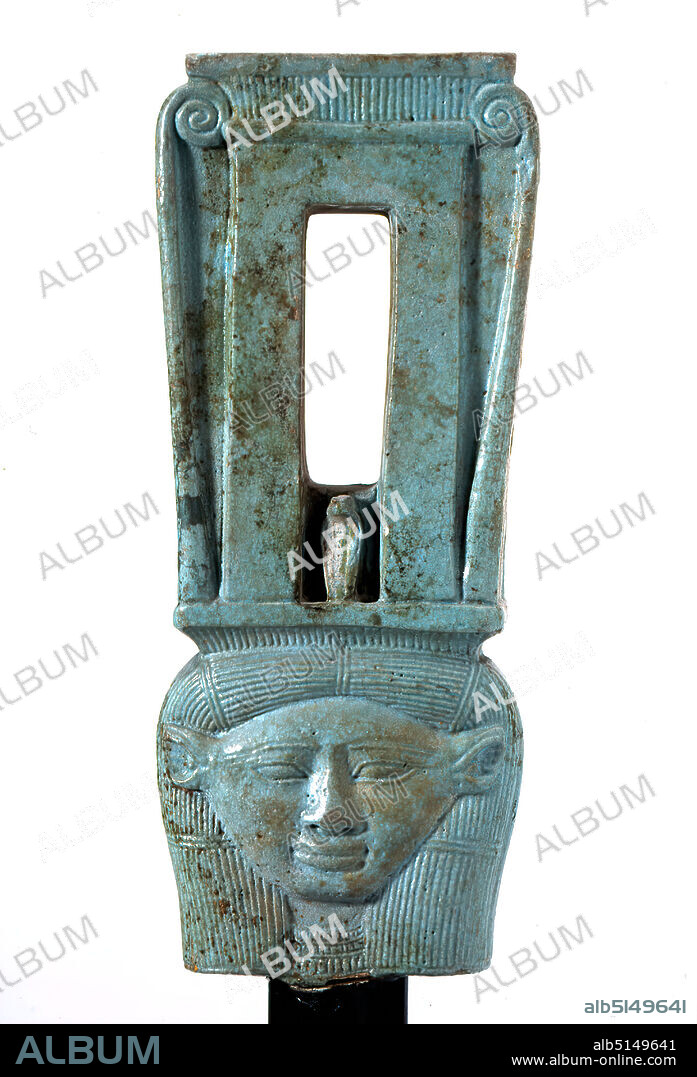alb5149641
Sistrum in Naos form with depiction of the goddess Hathor, Faience, hand modeled, pressed into the form, Faience, Quartz ceramics, Total: Height: 17 cm; Width: 7 cm; Depth: 2.7 cm, Musical instruments, ritual objects and accessories, Temples and sanctuaries (Egyptian religion), Head, face, antiquity, The sistrum is a rattle that was used in the cult in Egypt and Mesopotamia This faience sistrum has an identical design on both sides: Above the head of the goddess Hathor - recognizable by her cow ears - rises a slender construction (naos) with a hollow at the top and a Uraeus snake on the threshold. On the sides, volutes rise, their snails are inserted into the hollow at the top. The inside of the naos appears as a rectangular slit in which the rattle discs could move. Three holes for the rattle bars are inserted in the sides. On the flat upper side there might have been a figurative attachment. The base of the rounded handle can be seen at the bottom.

|
Ajouter à une autre Lightbox |
|
Ajouter à une autre Lightbox |



Avez-vous déjà un compte? S'identifier
Vous n'avez pas de compte ? S'inscrire
Acheter cette image

Légende:
Voir la traduction automatique
Sistrum in Naos form with depiction of the goddess Hathor, Faience, hand modeled, pressed into the form, Faience, Quartz ceramics, Total: Height: 17 cm; Width: 7 cm; Depth: 2.7 cm, Musical instruments, ritual objects and accessories, Temples and sanctuaries (Egyptian religion), Head, face, antiquity, The sistrum is a rattle that was used in the cult in Egypt and Mesopotamia This faience sistrum has an identical design on both sides: Above the head of the goddess Hathor - recognizable by her cow ears - rises a slender construction (naos) with a hollow at the top and a Uraeus snake on the threshold. On the sides, volutes rise, their snails are inserted into the hollow at the top. The inside of the naos appears as a rectangular slit in which the rattle discs could move. Three holes for the rattle bars are inserted in the sides. On the flat upper side there might have been a figurative attachment. The base of the rounded handle can be seen at the bottom.
Crédit:
Album / quintlox
Autorisations:
Modèle: Non - Propriété: Non
Questions sur les droits?
Questions sur les droits?
Taille de l'image:
2941 x 4320 px | 36.3 MB
Taille d'impression:
24.9 x 36.6 cm | 9.8 x 14.4 in (300 dpi)
Mots clés:
 Pinterest
Pinterest Twitter
Twitter Facebook
Facebook Copier le lien
Copier le lien Email
Email
